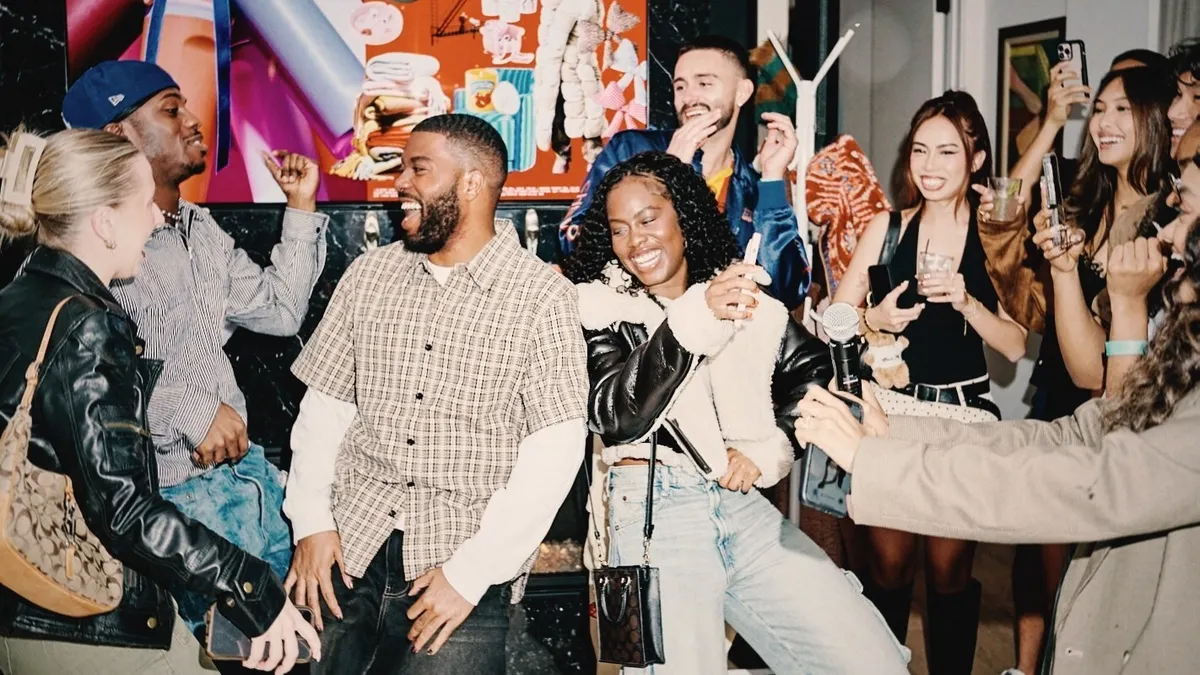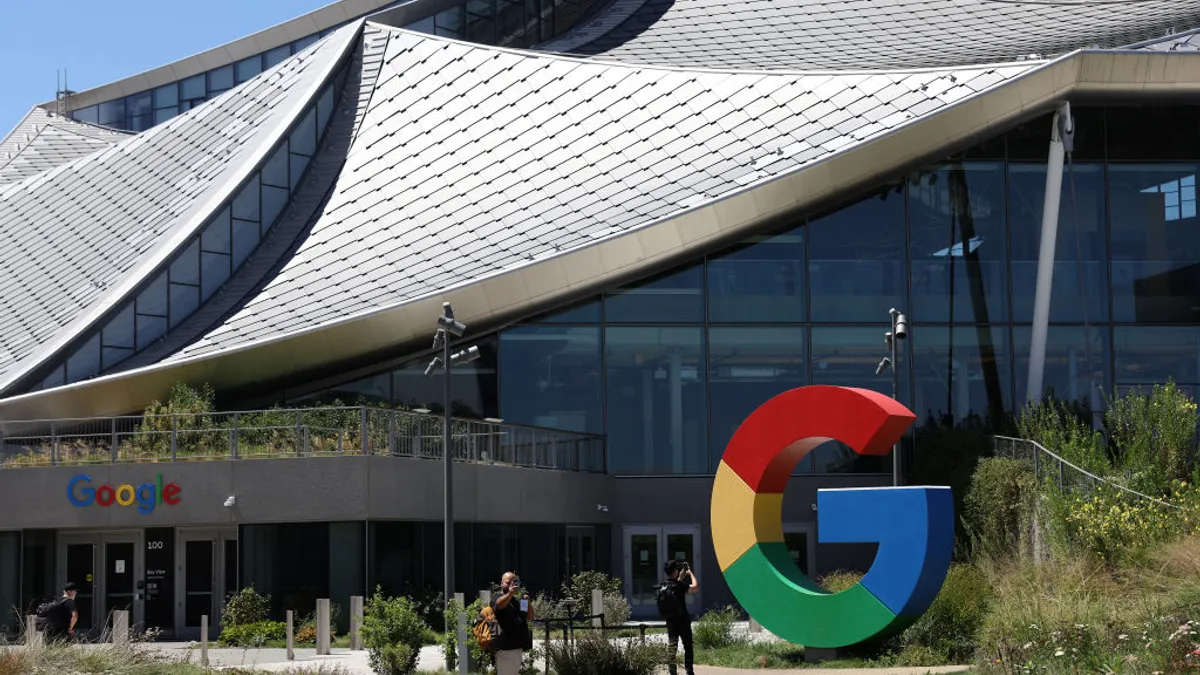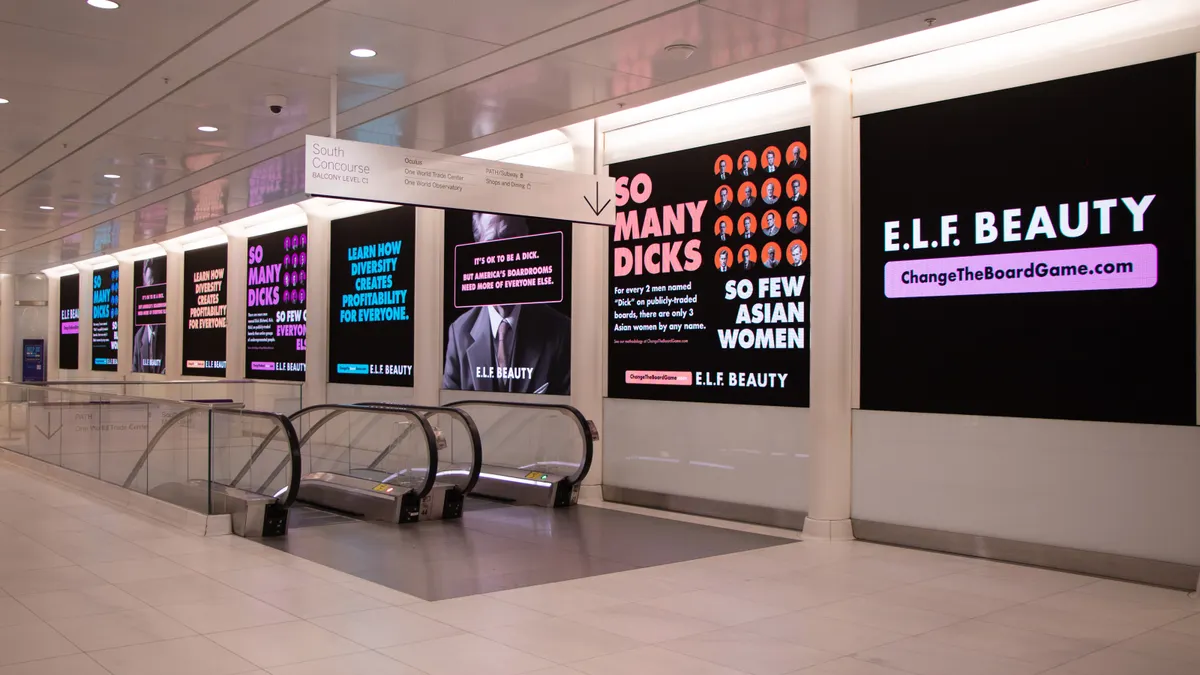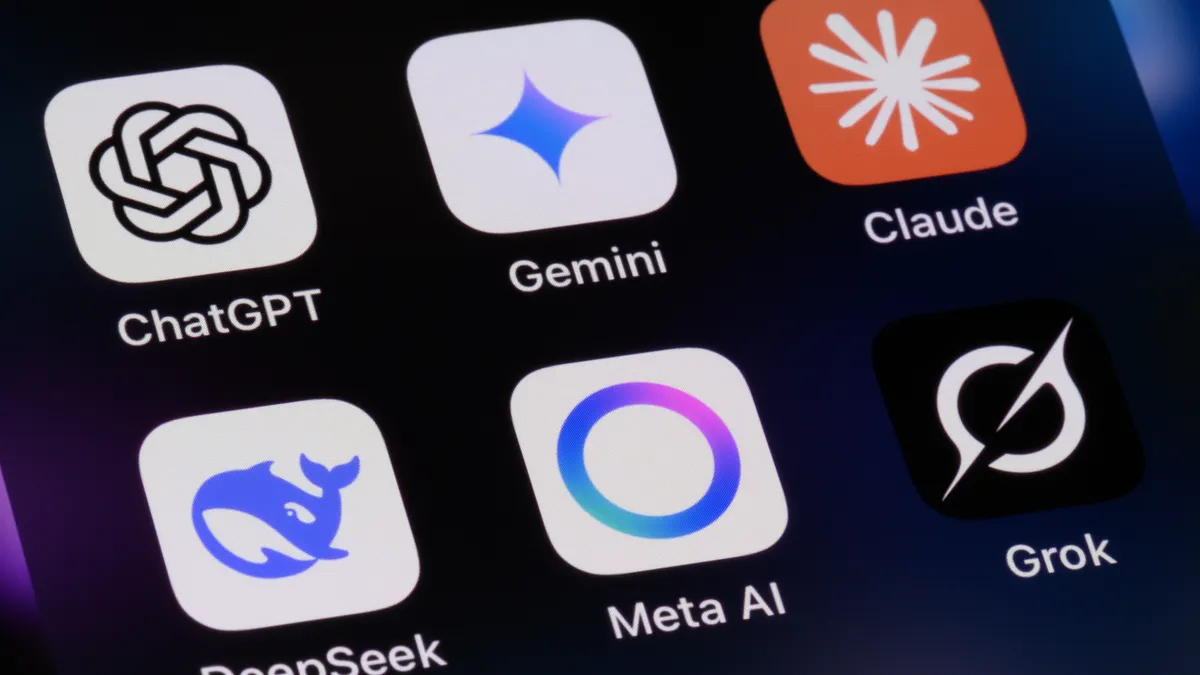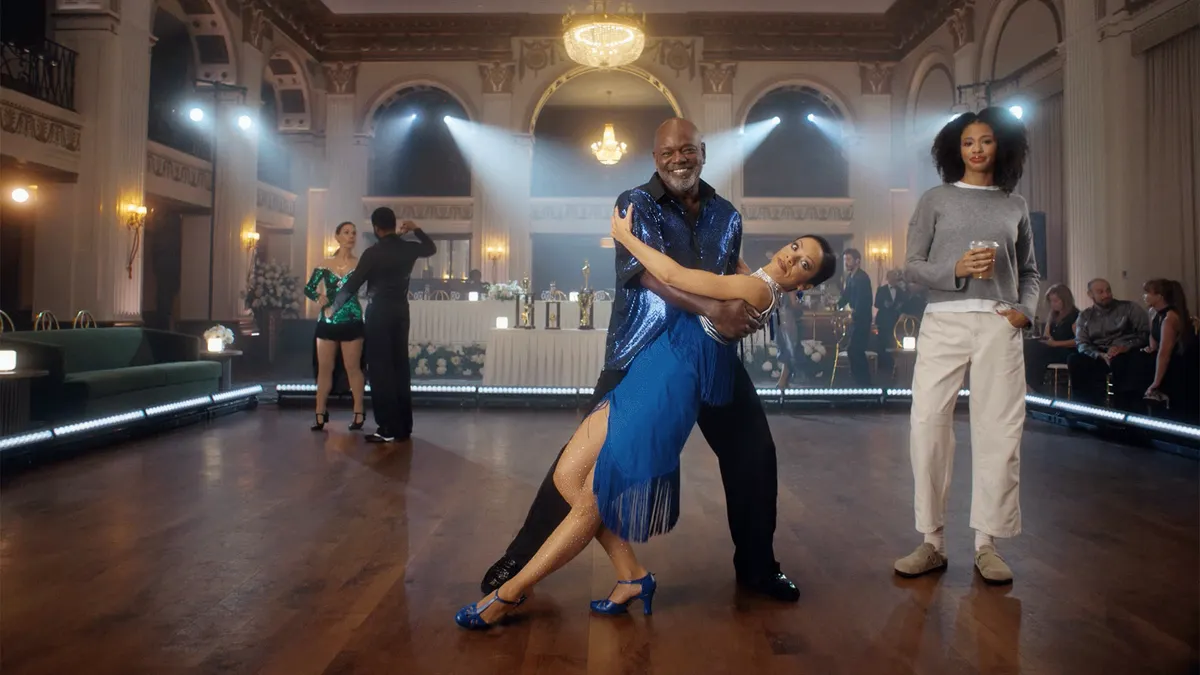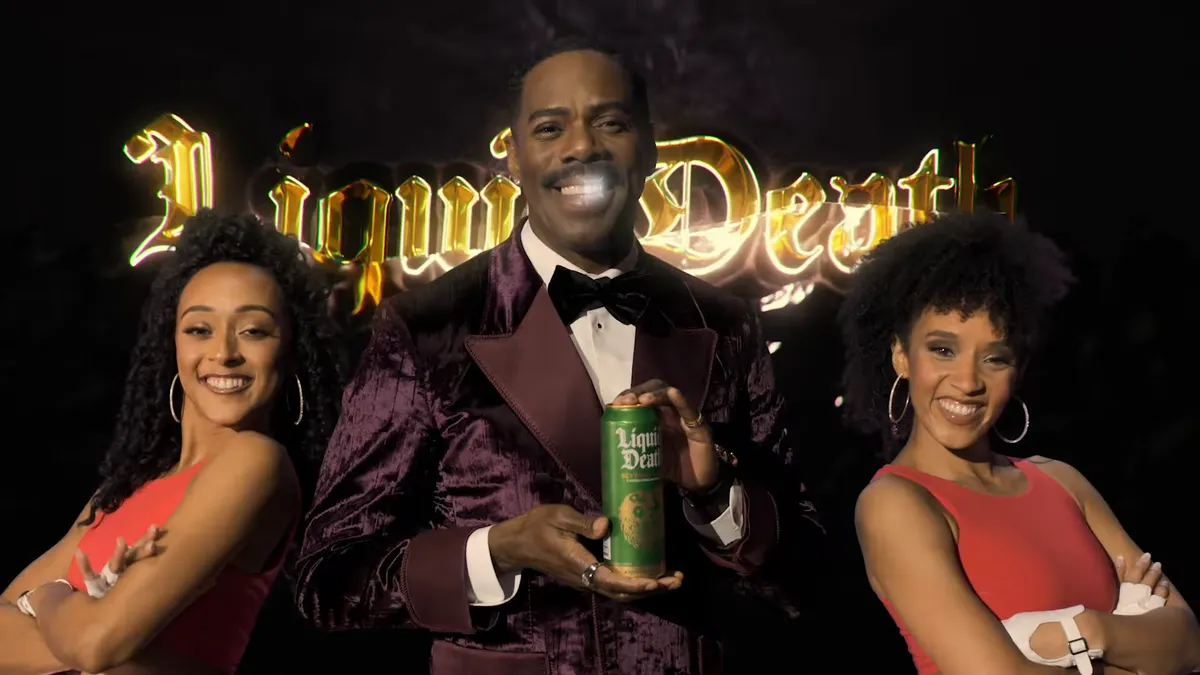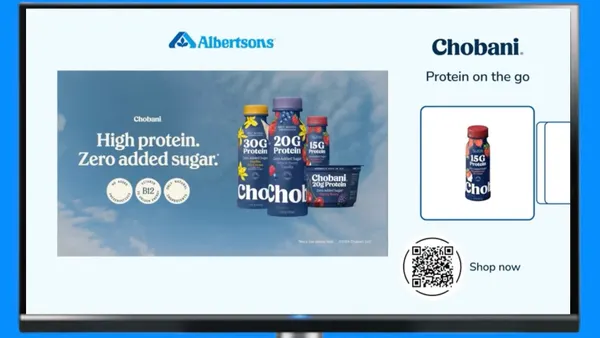The holiday season is in full swing, but what is considered by many to be the most wonderful time of the year has become a complex maze for marketers. Brands this year are tasked not only with breaking through to cash-strapped consumers, but also understanding an advertising playbook being rewritten by Gen Z, a cohort that remains valuable but is simultaneously leading a seasonal spending decline.
Broad uncertainty surrounds the 2025 holidays, with 57% of consumers expecting the economy to weaken over the next six months, according to Deloitte’s annual retail survey. That’s the most negative outlook since the consultancy began tracking economic sentiment in 1997. Spending behavior reflects the dour mood, with consumers forecast to pull back 10% compared to 2024. Gen Z is expected to have an even stronger spending retreat at 34%, making it critical for brands to be intentional about how they target the cohort.
“Gen Z is feeling the economic pressures at an even higher rate,” said Lupine Skelly, a retail research leader at Deloitte. “For retailers, we know that Gen Z is on the fence about a lot of things, so can you get some more marketing and these social media campaigns going to tempt them [and] talk about the value you’re offering.”
As marketers attempt to strike a chord with shoppers, many are relying on themes of connection and timelessness to communicate value in place of flashier narratives. Meanwhile, bets on social media virality, influencers and in-person experiences remain popular avenues for reaching Gen Zers, who at the same time are expressing higher levels of comfort with retail media and artificial intelligence.
Finding value in emotion
Though the majority of consumers expect prices to be higher this season, optimism remains. Shoppers surveyed by Deloitte plan to trim seasonal extras, like a new sweater to wear while hosting, so they can preserve holiday traditions, and 70% are searching for value. To meet the moment, marketers are replacing tropes of glitz and glam with a dose of realness.
“We expect consumers to be a little more budget-conscious, a little more discerning with what they’re spending, and you see that in the creative work,” said Hannah Lewman, a strategy director at Ogilvy. “Brands are responding by emphasizing the value of connection, shared experiences, more attainable human moments, less fantastical, dream holidays.”
The exec pointed to Gap’s holiday marketing campaign, titled “Give Your Gift,” which centers on a 90-second ad featuring an emotional cover of the Miley Cyrus song “The Climb.” The spot, handled by Gap’s internal creative team in partnership with creative agency Invisible Dynamics, is meant to shine a light on the importance of hope, connection and individuality.
“It’s not some over the top fantasy — it’s just emotional and real,” said Lewman.
As expected, affordability is also en vogue. Brands including Walmart are promoting more affordable options for holiday hosting and JCPenney is again relying on its “Really Big Deals” program to reveal new deals to consumers every Thursday during Amazon Prime Video’s “Thursday Night Football.” The department store is also running a campaign, “It’s What They Thought That Counts,” that riffs on the feat of buying a high-quality gift for less.
With value in focus, messaging that goes beyond price to explore the value brought to consumers’ lives or households will likely perform better, explained Daryl Giannantonio, chief strategy officer at VML. Giannantonio noted that ads focused on affordability risk being perceived as condescending to audiences.
“We have done so much work with so many different consumers, all different economic statuses, and price value alone is never an effective strategy,” Giannantonio said. “People want to have positive family experiences, they want to have good memories.”
Sam’s Club’s value exchange this season highlights convenience and member perks, like extended hours and no minimum fees on curbside pickup or express delivery. The “Yes And” campaign, which stars actor Chris Pratt, launched in October and runs through December to keep Sam’s Club top-of-mind through various holiday occasions.
“When we say holidays, it’s not just December or accelerating December into October,” said Sam’s Club CMO Chris Curtin, in an October interview. “Good brands, best-in-class brands, meet consumers where they are.”
“Yes And” spans digital, social and linear TV, with ads running during live sports events including both college football and NFL games. Sports have been a focus for a number of other marketers this season, including Best Buy, True Religion and Pizza Hut. Live sports broadcasts are still “appointment television” and optimal for reaching a diverse audience, Curtin said.
“It’s one of the few things that still kind of builds audiences really well and naturally. It’s typically a start-to-finish set of programming, it doesn’t have as many interruptions as other platforms do and it’s a general audience,” he said.
Gen Z’s growing influence
Value takes on even greater importance for Gen Z, with 95% of the cohort seeking deals this season, per Deloitte. Brands attempting to shore up stronger loyalty with the demographic, whose spending power is expected to reach $12 trillion by 2030, are emphasizing personalized experiences across digital, social and in-person channels.
Urban Outfitters’ seasonal push was informed by insights from members of its UO Insiders community of over 10,000 Gen Z shoppers, 54% of whom signaled they use wish lists to present and share holiday gifting ideas. Many of the shoppers also indicated that they are looking to celebrate this year with new traditions and emphasized the importance of community, according to Head of Brand Marketing Cyntia Leo.
The retail brand responded by partnering with online design platform Canva to create three wishlist design templates with free, branded elements, including over 100 products from Urban Outfitters that can be easily added to the templates. Keying in on a specific insight about Gen Z is one way the brand lets shoppers know it hears them, Leo explained.
“For us, when we think about partnerships it’s not necessarily about — yes, we want some flash and some pizzazz — but we really take a step back and we’re asking, what does our customer need, and how can we best serve them in this moment,” Leo said.
The brand also tapped into Gen Z’s desire for community with creator- and celebrity-led events in Los Angeles and New York City hosted by R&B singer Khalid and cast members from Bravo reality series “Next Gen NYC,” respectively. The events included talent-driven experiences while showcasing Urban Outfitters’ holiday products.
“I would absolutely bet that Gen Z is going to be dictating what happens on [Black Friday], especially in-store.”

Lupine Skelly
Retail Research Leader, Deloitte
Despite being a digitally native generation, Gen Z has a strong desire for in-store experiences. Almost three-quarters of the cohort shop in-person at least once a week, and the majority consider it an experience, according to research from payments platform Adyen. Comparatively, just over one-third of baby boomers consider in-person shopping an experience. The insight could be a signal of what to expect around tentpole shopping events like Black Friday.
“We see that the younger generation and the higher income people actually spend the most during Black Friday/Cyber Monday. I would absolutely bet that Gen Z is going to be dictating what happens on that day, especially in-store,” said Deloitte’s Skelly.
True Religion is attempting to shore up a stronger relationship with younger consumers, and has leaned into the 18- to 25-year-old audience over the last six months, said CMO Kristen D’Arcy. That has included college campus tours, an increased focus on platforms TikTok and Snapchat and a collaboration with fashion brand Von Dutch for a limited-edition holiday collection fronted by a handful of stars from the latest season of “Love Island.”
“We have over 10 million people in our databases right now, so at almost $500 million in sales this year, we’re confident that if we add to those databases and continue to bring in a younger customer, we will get to that billion-dollar brand mark in short order,” D’Arcy said.
The brand also launched a “Wrapped in True” campaign that celebrates multihyphenate women, including Grammy Award-winning artist Ciara and five other women who have found success in industries like fashion, business and sports. Sports has been an ongoing focus for True Religion as fashion and sports become increasingly intertwined.
The social conversation
Younger consumers’ allegiance to social media and influencers also continues to shape holiday strategies, and for good reason: 74% of Gen Z plans to leverage the two channels for inspiration and product discovery, according to Deloitte, and social media users spend around 25% more on holiday goods than non-users.
Target’s holiday campaign sees the return of fictional store team member Kris K., who last year was dubbed “Hot Santa” by consumers. The character also led to over 70 million views on TikTok under the hashtag #TargetSanta. The move is a prime example of a brand leaning into and amplifying a social conversation, said Ogilvy’s Lewman.
@target ❤️if you remember Kris K. from Target! HE’S BACK and merrier than ever!!! ???????? #KrisKFromTarget #MountainTarget #TargetSanta ♬ original sound - target
Marketers like Lowe’s, Chewy and Best Buy are also increasing their emphasis on creators, specifically through creator storefronts, which allow brands to have dedicated online pages to display creator content and provide a native shopping experience.
Best Buy has doubled the number of storefronts available through its creator program since it launched in April and is partnering with over 200 influencers for its 2025 holiday campaign. Additionally, the retailer is partnering with YouTube talk show “Hot Ones” and content creator Binging With Babish to push additional holiday tech, a move that provides consumers with another layer of utility and serves as a point of differentiation, Lewman explained.
Preferences evolve
While influencers and social media are popular channels to reach Gen Z, other methods are beginning to come into favor, including advertising fueled by retail media. Sixty-one percent of Gen Z consumers don’t mind seeing sponsored ads for relevant brands or products, an increase from 50% in 2024, according to data from Bain & Company.
“I suspect part of it is the youngest generation of consumers grew up in a world in which sponsored content was more ubiquitous, and so it doesn’t seem off-putting,” said Stephen Mewborn, global solutions lead for retail media and data monetization at Bain & Company.
Simultaneously, retail media is a top five holiday brand investment and the third-fastest growing holiday tactic by expected investment increase, behind e-commerce and marketing and media, per Bain. Overall, ad buyers intend to invest nearly 12% more on holiday retail media this year over last. Global retail media spending is expected to top $300 billion by 2030, per Forrester.
“People are going to want to create a bubble, that’s what people want to do on holidays ... Brands want to be a part of the moment, not burst the bubble.”

Daryl Giannantonio
Chief Strategy Officer, VML
Retail media investments around the holidays not only offer marketers an opportunity to reach younger audiences who are establishing their brand preferences, but also allow them to reach a broader audience, Mewborn explained.
“It’s not the only way to reach younger consumers, but it is the way to reach younger consumers that also gives you bang for the buck with older consumers,” he said. “The audience on Walmart.com spans 18 through age 80, and there aren’t a lot of media properties that do that.”
Forty-three percent of Gen Z is also turning to AI for product inspiration and finding the best prices, according to Deloitte. That compares to 33% of shoppers broadly who plan to use AI in their purchasing journeys, a figure that has more than doubled over 2024. Brands could take advantage of the insight by embedding AI tools into their own sites to help remove friction from the shopping experience, like finding gifts for various age groups, Skelly said.
Brands are again exploring the role generative AI can play within their advertising creative this season, including Coke, which released an updated version of “Holidays Are Coming,” an AI-developed ad originally launched last year. Google also recently debuted its first fully AI-generated ad, which features a turkey that uses an AI search tool to escape Thanksgiving.
Whether or not consumers are ready for AI-generated ads is up for debate. Coke’s AI holiday efforts have continued to see backlash, but company executives maintain that its ads are surpassing benchmarks for Christmas campaigns. As consumers become more aware of AI in creative, expectations around quality will grow, Lewman said.
“I think there’s growing public awareness of AI being used for ads and more conversation and consumer discourse around it, which means the bar for creative has been raised significantly,” Newman said. “It needs to be done in a way that is brand aligned, high-quality, likable — the principles that make good ads in general.”
As marketers explore the various ways to tap into this season’s holiday conversation, the most important consideration should be taking stock of the moment, including the current economic climate, to avoid coming across as out of touch, VML’s Giannantonio said. Regardless of the channel, the exec emphasized the importance of going beyond the functional aspects of a product to reinforce the value and added joy that a brand can offer.
“People are going to want to create a bubble, that’s what people want to do on holidays, you want to create a bubble and shield your family and friends and create this moment,” Giannantonio said. “Brands want to be a part of the moment, not burst the bubble.”



